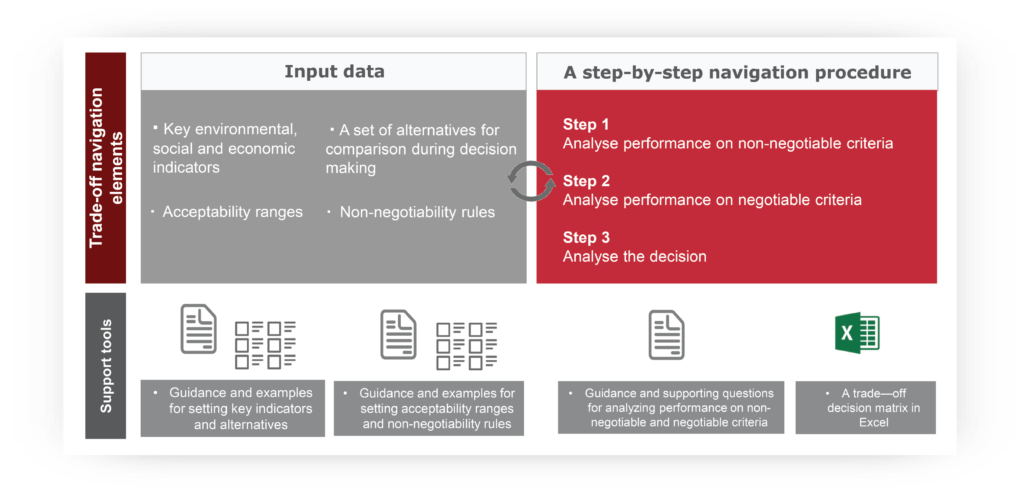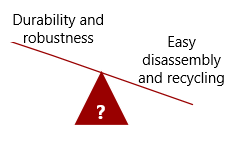

About the tool
As a product designer, have you ever experienced a contradictory situation, where prioritizing design for durability strategy would render success of realizing design for easy disassembly costly or impossible? A situation, where increasing a recycled materials content in a product would lead to diminishing a product’s lifespan? As a business developer, have you ever experienced a situation, where prioritizing a supplier from a vulnerable community in a developing country abolishes minimization of greenhouse emissions because of long haul transport? These contradictions are called trade-offs, where it is not possible to achieve the desired performance on all key criteria, thus some criteria should be prioritized over others.



It is shown that trade-off situations are often inherent in the decision-making process for sustainability – adding key environmental, social and economic criteria or key indicators creates along traditional criteria or circular economy criteria creates complexity in the decision-making processes, exacerbated by often conflicting performance on the desired criteria.
To enable a structured, transparent and traceable decision-making process whenever sustainability trade-offs arise, A trade-off navigation guidance is proposed, outlining key input data and decision steps to analyse trade-offs and take informed decisions.
How to apply the tool?
The guidance follows a structured step-by-step procedure relying on specific input data and support tools embedded in an Excel workbook. The guidance presents requirements to the input data and their examples, followed by elaborations of activities in each step of the procedure.
The procedure follow the steps described below:
Step 1:
Analyse performance on non-negotiable criteria
Step 2:
Analyse performance on negotiable criteria
Step 3:
Analyse the decision
When to apply the tool?
The guidance can support any decision-maker at a tactical and operational level, who are engaged in the development of a sustainability-related initiative. The guidance can be used anytime a number of sustainability-related criteria are considered for the decision-making process in the early stages of an initiative development, leaving time to adjust the alternatives before ‘locking in’ the design features. The guidance can support either multidisciplinary teams or teams of business developers, product designers, production and service managers or any expert involved in the decision-making process for sustainability. The guidance follows a ‘hands-on’ approach to support building argumentations and justifications of decisions to avoid haphazard choices.

Read more about the additional results of this focus area and download the inspiring workbook here.
Downloads
